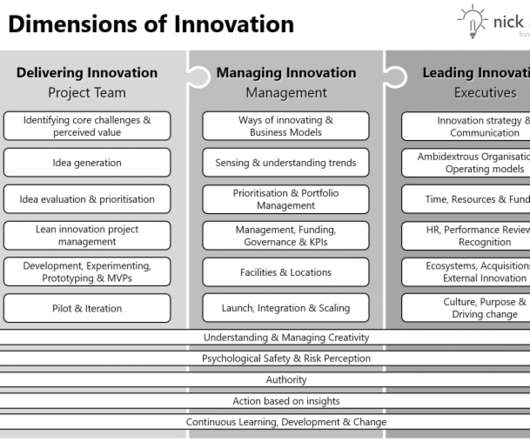Key Issues in Innovation Management – Revisited – Part 1
Tim Kastelle
MARCH 7, 2016
At the beginning of 2013, Tim Kastelle and I identified four key issues in innovation management for the time to come. Accelerating dynamics and pace of disruption in most industries, in particular triggered by the perfusion of new technologies, lead to decreasing life times of existing business models.



















Let's personalize your content